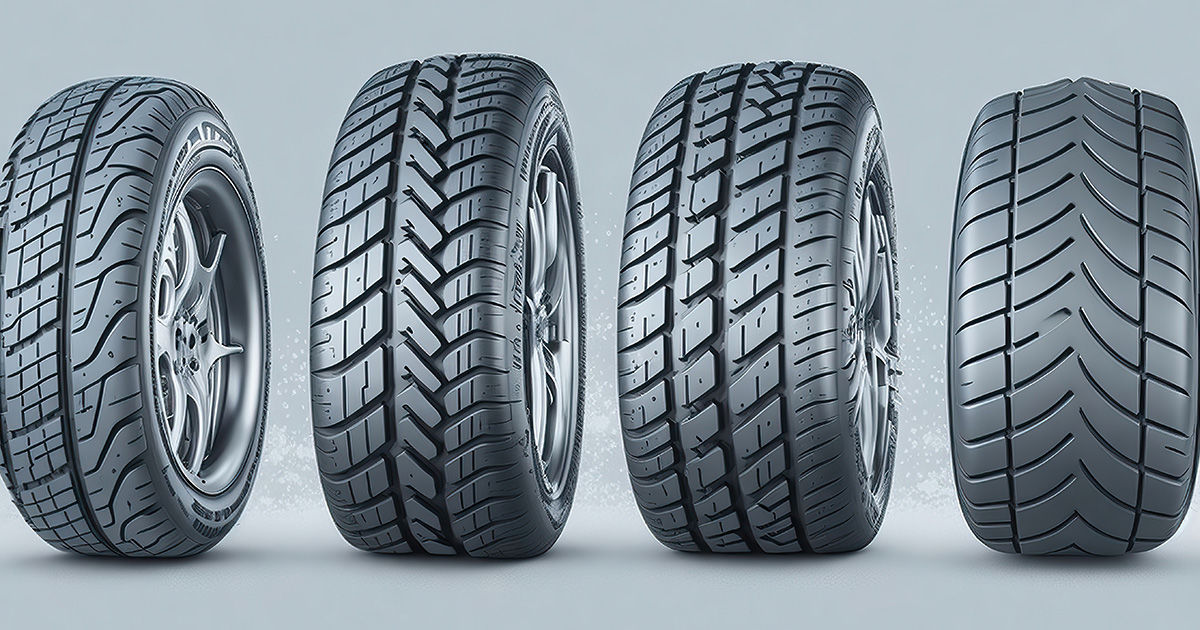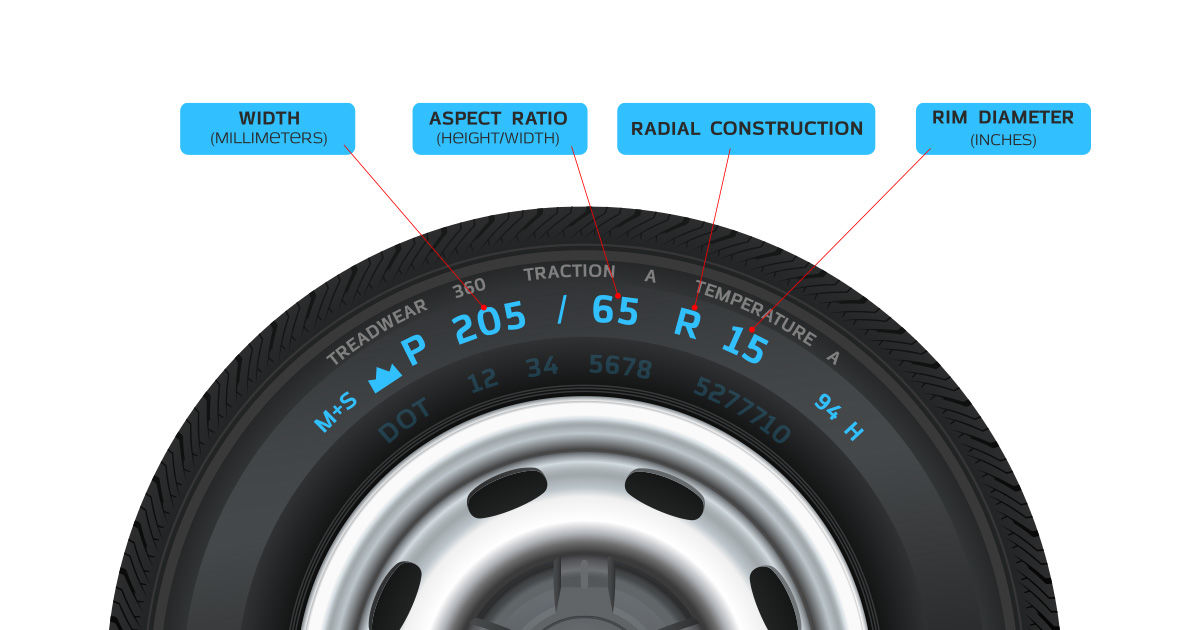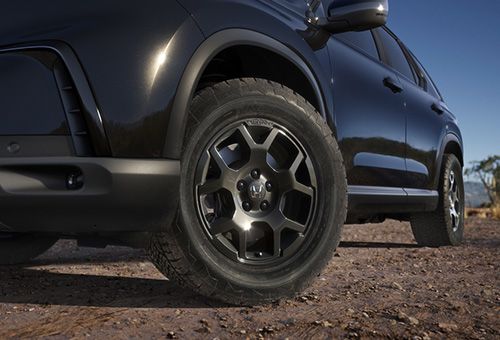All About Tires
| Days | Hours |
| Monday | 7:30AM to 6:00PM |
| Tuesday | 7:30AM to 6:00PM |
| Wednesday | 7:30AM to 6:00PM |
| Thursday | 7:30AM to 6:00PM |
| Friday | 7:30AM to 6:00PM |
| Saturday | 8:00AM to 4:00PM |
| Sunday | Closed |

How to Choose Tires for Your Vehicle

Pickering Honda offers a wide selection of top-quality tires, including winter tires, all-season and all-weather tires, performance tires, all-terrain tires, and more from leading brands such as BF Goodrich, Goodyear, Pirelli, and Michelin.
To ensure that you select the best tires for your car or truck, it’s essential to consult your vehicle’s manual for recommendations on tire size and models that are compatible. At Pickering Honda, we strive to make the tire-buying process easy and convenient for you, even when shopping online.
Once you have determined the tire size and models that are compatible with your vehicle, it’s time to consider the type of tires that will perform best during unpredictable weather.
Below, we have provided additional information to help you choose the right tires for your needs.
Different Types of Tires
All-Season Tires
To ensure safe driving throughout spring, summer, and fall, all-season tires are the perfect choice for handling various road conditions. Despite their name, all-season tires lack certification from the Tire and Rubber Association of Canada for winter use. This is due to their inability to provide the necessary traction required for driving in cold temperatures and snowy conditions.
Winter Tires
If you want to have better control while driving on snowy and icy roads, then winter tires are the way to go. These tires are made with special compounds that improve traction, stopping power, and handling when the temperature drops below +7C. You can easily identify winter tires by looking for the mountain snowflake symbol, which certifies that they are approved for winter use by the Tire and Rubber Association of Canada.
All-Terrain Tires
If you’re looking to take your light truck or SUV off-roading, all terrain tires are a smart option. These tires boast a more aggressive tread pattern that improves traction in muddy and snowy conditions. However, it’s important to check if the sidewall has a snowflake symbol, which indicates that it’s suitable for winter use.
All terrain tires are constructed with unique compounds that make them sturdy and long-lasting. Nonetheless, they won’t offer the same level of traction and cornering on the road as all season tires. Additionally, their large tread blocks can produce significant noise at higher speeds.
All-Weather Tires
All-Weather tires are specifically designed to provide optimal performance on roads regardless of the season. These tires offer the advantages of both All-Season and Snow tires, ensuring that they are suitable for use all year round. They meet the necessary requirements for winter use, while also remaining usable during spring, summer, and autumn. You can also identify All-Weather tires by looking for the mountain snowflake, just like Winter Tires.
Performance Tires
Performance tires are specifically engineered to enhance your vehicle’s handling and control. They feature stiffer sidewalls and highly adhesive tread compounds that offer exceptional grip and cornering abilities, regardless of whether the road is wet or dry. However, it’s important to note that performance tires have a shorter lifespan compared to most all-season tires.

What Size Tire Do You Need?
When your car is manufactured, it comes equipped with wheels and tires of a specific size. This size is carefully chosen by engineers who consider various factors such as ride quality, fuel economy, braking performance, handling, and steering response to ensure an optimal driving experience.
However, this doesn’t mean that you can’t make slight adjustments to your wheel or tire size to improve your vehicle. This is referred to as "plus sizing" and can be done for aesthetic or functional reasons, such as improving traction or finding a more common tire size. To make these modifications, it’s essential to understand tire markings.

How Do You Read Tire Sizing?
Tire markings are usually formatted as P225/65R17. The code breaks down as shown to the left.
If you’re thinking about switching up your wheel and tire sizes, there’s a simple guideline to keep in mind. Increasing your tire width by one size while decreasing the aspect ratio (the height of the sidewall) by one size will result in the same overall tire size as before. It’s worth noting that there are advantages and disadvantages to both wider and taller tires.
Frequently Asked Questions (FAQs)
In some older car models, this information may be available on the passenger door jamb, inside the center console, in the owner’s manual, or even on the inside of the fuel door. On newer vehicles, you will find the information on the driver’s door frame.
Different tires come with different rates of wear. It’s important to note that summer tires should be replaced when the tread depth reaches 3mm, while winter tires (also called snow tires) should be replaced when the tread depth reaches 4mm.
While it may seem like a simple solution, swapping out one tire on your vehicle instead of two or four can have unforeseen and unfortunate consequences.To ensure your vehicle’s optimal handling, ride comfort, and road traction, it’s best to replace all four tires simultaneously. When you replace just one tire, it can cause issues in the future as it will have a different tread depth, leading to varied braking, accelerating, and cornering abilities compared to the other tires. This significant difference in wear between tires can negatively impact your vehicle’s overall performance and stability.Additionally, your vehicle’s electronic and mechanical systems, such as transfer cases, differentials, anti-lock brakes, and traction control systems, may struggle to interpret information from your tires if one is notably different from the others.
To avoid any potential hazards on the road, drivers should learn how to detect when their tires are becoming bald and in need of replacement.One way to do this is by keeping an eye out for the tire wear bars, also known as “Treadwear Indicators” in the engineering world. These bars are typically as wide as a pencil and can be found running across the base of the tire tread from side to side. They’re usually most visible once the tread depth reaches 2/32″.It’s crucial to note that once the tread wears down to the level of the treadwear indicators, the tire is no longer safe or legal to use, and it’s essential to replace it immediately.
In some situations, you can repair a damaged tire but it depends on the kind of damage done to the tire. For a more comprehensive explanation visit this page about tire repair and replacement.


